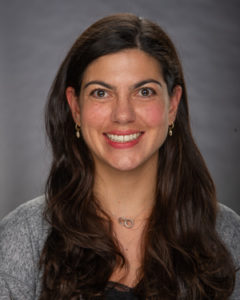
If Seattle and the broader state of Washington provided the vascular care blueprint for how to proceed once the COVID-19 pandemic started to spread out to other parts of the country, it might also hold a trail of clues for what follows as the virus begins to wane.
Kira Nicole Long, MD, watched on as the region became North America’s ground zero for the virus. And she’s had a front-row seat as the coronavirus peaked in the region, recently giving way to a slowly developing new normal.
“Our peak was about two weeks ago now. We’re under a stay-at-home order until May 4, but I’m cautiously optimistic,” relates Long, who is nearly two years into her practice as a vascular surgeon for Swedish, a nonprofit healthcare provider with five hospital campuses in the Greater Seattle area.
“We really lucked out because I think we were all expecting that, in downtown Seattle where I work, we were going to get hit pretty hard because they were so overwhelmed north of us, which is where Kirkland, Overlake and the hospitals that were really getting pummeled are. But we didn’t end up taking as many as we expected. We took all the precautions and saw a lot of positive [patients] but it wasn’t nearly as bad as we had prepared for, which is great.”
A key point: Social distancing appeared to work, continues Long. “People took that pretty seriously here. And at least at my hospital, they did a pretty good job of conserving PPE [personal protective equipment] appropriately and instituting screening checkpoints at every entry. I don’t think we’re in the clear but fortunately we’re under control at the moment.”
Nevertheless, a snapshot of Long’s caseload both before the coronavirus strain registered on the radar of her vascular practice and where her burden sits now seems to captures the moment.
“Normally, I’m doing on average close to 1,000 RVUs [relative value units], and now I would say my numbers have been cut at least in half, if not more,” she explains. “When I’m on call, it feels relatively busy with people coming in with ischemic limbs or urgent dialysis problems. Obviously, we’re not doing elective surgeries; we’ve had a few more urgent things that we’ve been able to get on to the schedule; but I spend a lot of time doing nothing.
“We got our telehealth up and going, so that’s been good because at least we can do ‘patient visits,'” she added, quipping, “Otherwise, it’s pretty boring.”
On a more serious note, Long says her hospital followed a set of guidelines that erred close to those put out by Benjamin W. Starnes and his team at nearby University of Washington Medicine: rupturing or rapid-growth aneurysms, critical limb ischemia, symptomatic carotid disease, urgent dialysis access salvage—or on-call cases such as patients arriving with a cold leg, “which, interestingly, did happen a couple of times.”
Now comes the trickle—perhaps at some point turning into a deluge—of patient cases who’ve been staying away from healthcare facilities out of fear.
“I’m absolutely seeing that already,” Long says. “Mostly, we’re seeing it in limb salvage, or not being able to do limb salvage. We’ve had a few patients come in who have been sitting at home with worsening gangrene or diabetic foot infections, and it’s progressed now to the point where now it’s going to require an amputation. I have one patient who had a symptomatic carotid, and I was planning to do it. He was like, ‘I’m absolutely not coming in; I’m too afraid.’ I have not heard back from him about how he’s doing, but I’m nervous.”
In the end, Long and her surgical partner did not have their offer to pitch in either in the intensive care unit (ICU) or in critical care taken up—a consequence perhaps of how things played out for her institution in downtown Seattle. Neither, as far as Long can tell, were any of her nonsalaried colleagues whose remuneration is production-based forced to fulfill an agreement to be redeployed in order that salaries be maintained—yet.
So, Long’s cautious optimism goes on for now. Still, early sentiments of what all of this means persist. “What disturbed me initially was that, with the whole social distancing to stop the spread of COVID, was the fact our hospitals were going to get overrun, and all these people, whether it’s cancer or ischemic limb or all the pregnant women who can’t have their partners with them when they’re giving birth: The consequences to all this are very far-reaching.”












